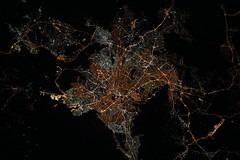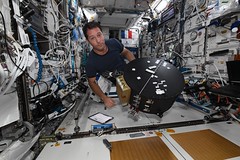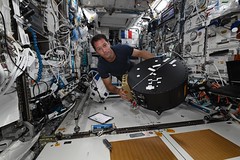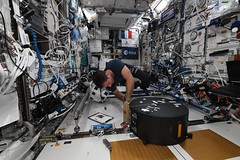Thomas Pesquet posted a photo:
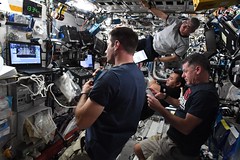
An upcoming spacewalk for Shane and myself has now been announced, but we have been hard at work with the ground teams for a few weeks already: here we are in a conference call where we discuss the procedures, the tools, the contingency scenarios, and try to all be on the same page before the day itself. Actually, many people have been doing A LOT of work over more than a year to be ready for this. It’s beautiful to see all the different disciplines come together to make such special moments happen. It always feel like the stars have to align for something so complicated to happen, and they make the stars align every time with talent and sheer work. Impressive. A million thanks to everyone involved.
Deux sorties dans l’espace que Shane et moi allons réaliser dans une dizaine de jours viennent d’être officiellement annoncées, mais cela fait déjà plusieurs semaines que l’on s’y prépare avec les équipes au sol. Ici on était en visioconférence pour passer en revue les procédures, les outils, anticiper les scenarii dégradés (qui n’arrivent jamais :)) et s’assurer d’être bien sur la même longueur d’onde avant le jour J. En réalité, cela fait déjà plus d’un an que de nombreuses équipes travaillent à la préparation pour faire en sorte que les étoiles soient bien alignées sur un projet d’une telle complexité. Déjà que pour aller dans l’espace, on a l’impression qu’il faut qu’une série de miracles s’enchaînent, mais sortir en scaphandre ça rajoute encore un cran à la complexité. C’est le genre d’opérations hors normes qui impliquent des domaines très différents et nécessitent un énorme travail de préparation. Bravo à toutes les équipes, et on va faire de notre mieux pour tout faire marcher comme prévu :)
Credits: ESA/NASA–T. Pesquet
527C3814
